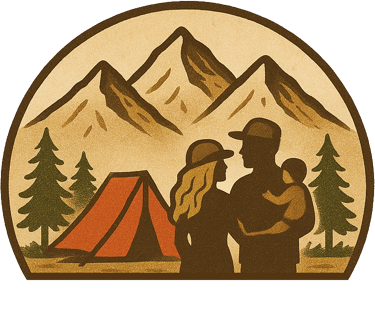Ski touring season knocking on the door!
Why to start ski tour & what to do know before you do so.
Jan
5 min read
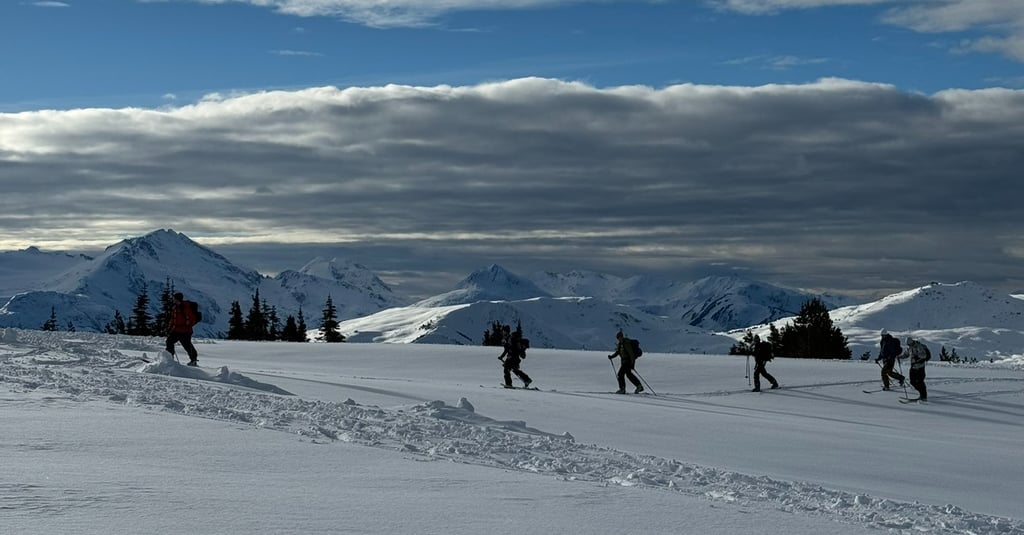

Are you a hiking enthusiast like us, but find the winter season challenging as fewer and fewer trails become accessible? Well, winter in BC lasts for almost half a year, so good luck waiting it out! Learn why ski touring is a great winter activity option for hikers and what you need to know before you head out.
Most hikers, like us, who love spending time outdoors and exploring new trails tend to stick to what they know and continue with the same activity for as long as possible. Those who've had enough of battling the snow in waterproof boots and gaiters leaving knee deep footprints have already switched to snowshoes, making their backcountry trips more comfortable, safe, and respectful to others, especially ski tourers, as deep holes damage ski tracks and requires them to be retraced elsewhere.
What is ski touring?
Essentially, it's an activity that makes traveling backcountry in winter more efficient and natural. Using skis to move through snow-covered terrain allows you to cover more ground in less time compared to snowshoeing or walking, and it opens up access to a wider range of terrain, including remote areas that might be challenging or even impossible to reach on foot. While it may be more physically demanding, ski touring allows you to descend faster, enjoy fresh powder, and have leaving your mark on the mountain.
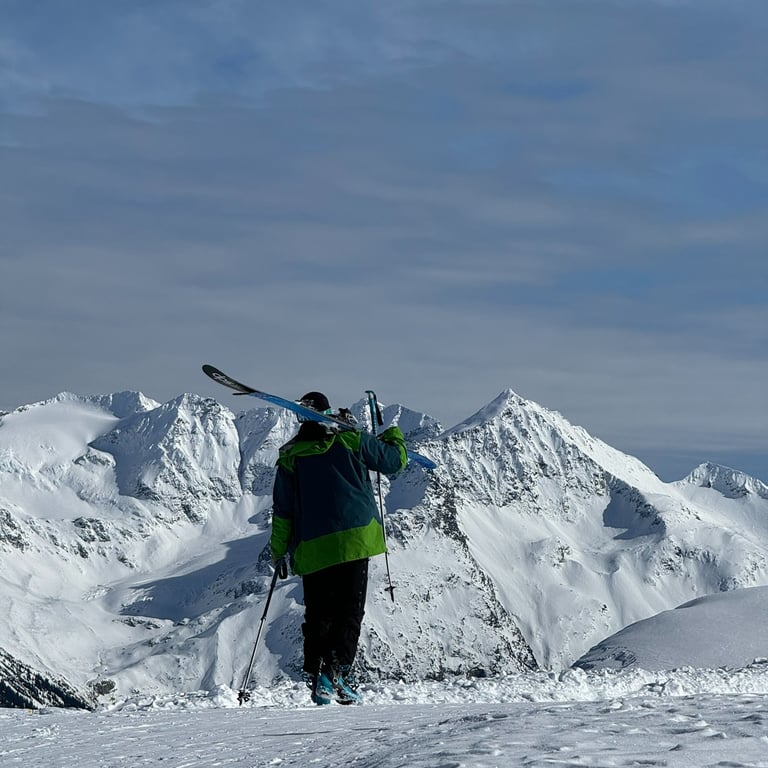

Do you know how to ski?
I'm not an expert skier myself, so how can I do ski touring? Believe it or not, people who ski tour are often not as skilled as resort skiers. Why is that? Well, resort skiers spend a lot of time practicing their technical skills like carving, mogul skiing or even park tricks, and they're constantly improving their skiing. Not to mention those skiing double-black diamond runs at resorts like Whistler.
In ski touring, there's usually less time for skiing compared to a resort day. It takes time to reach the summit, and often you'll only have time for one descent on the way back down. However, this doesn't mean you shouldn't know how to ski. The specific route you choose will determine the level of skiing required, but you should aim to pick a route with slopes you can comfortably ski down. Don't start by trying to summit the tallest peak in sight.
Here is a funny story about learning to ski. When I was a kid I learned on a 20-degree slope on the side of my village, and I even ended up in a creek at the bottom! But at the end of that day, I was able to make it down safely, however with terrible technique. I think this is the most important aspect of skiing during ski tours: being able to ski down safely. Planning and preparation are therefore key.
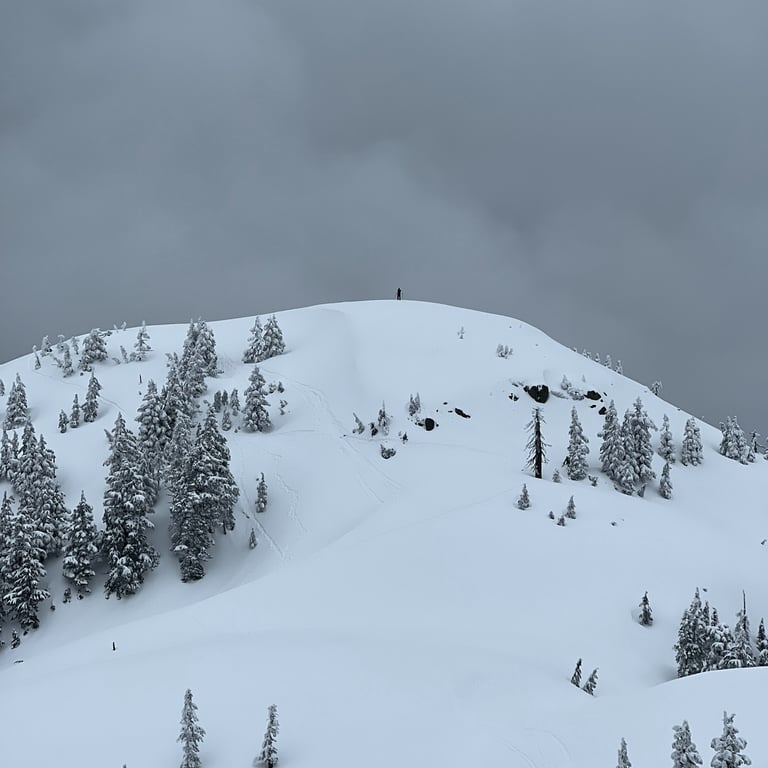

Do you need expensive gear for ski touring?
It's partially true, but it doesn't have to be. While touring skis are often different from resort skis— generally lighter and sometimes wider—and you'll need specific touring bindings and skins, you don't need the most expensive gear to get started.
There are many types of touring skis available, each with different specifications and brands. For beginners, it's important to understand that ski touring is more physically demanding than resort skiing. Touring skis are therefore often typically lighter, as every gram counts on longer tours.
Touring bindings allow you to free your heel for walking uphill. They usually have pins that connect to the front of your boot in walk mode. When you're ready to ski downhill, you switch to ski mode, locking your heel into the binding.
Finally, skins are essential for uphill travel, a processed animal hide made from baby seals.. just kidding They're long strips of material, often synthetic nowadays (might be also animal origin, but not necessarily young seals), that attach to the bottom of your skis to prevent slippage. When you're ready to ski downhill, you remove the skins and store them in your backpack ( Or in your jacket close to your body. Thank me later ;) ).
When starting with touring, it's a good choice to rent the full set of essential ski touring gear. Rental shops have knowledgeable staff who can help you choose the right equipment and show you how to use it properly.
Where to Start?
If you've just picked up your rental gear, the best place to start is in-bounds at a ski resort where uphill travel is permitted. This allows you to test your equipment, practice your technique, and get comfortable with the gear in a relatively safe environment with a low avalanche risk.
Whistler allows uphill travel on designated routes marked with signage. For the latest information, check the official Whistler website or ask at a local ski rental shop.
Near Vancouver, Mount Seymour offers beginner-friendly routes. Between mid-December and March 31, BC Parks installs two winter backcountry ski touring routes that start at the park kiosk.
Once you're comfortable with in-bounds touring, you can explore other beginner-friendly routes in the Lower Mainland.
Safety First
Safety is the most important part of ski touring. Always stay safe and avoid risks. Any stay in backcountry comes with whole new set of risks and hazards when it comes to winter activities. While you might be able to survive couple of days when things go sideways in the backcountry in summer it is not the case in winter. Your biggest enemy is cold and avalanches.
While not strictly mandatory it is strictly recommended to do Avalanche Skills Training (AST) Level 1 before heading to backcountry. Also you need to carry avalanche safety gear including a beacon, shovel, and probe and know how to use it. If you decide to go even though not having the training, you should avoid any slopes steeper than 25 degrees, but it also does not mean that small avalanche can not occur there as well. You should check current avalanche situation always before going in the backcountry on avalanche.ca that should become your best friend during winter season. You should never travel alone, and so always go with your buddy and carry a satellite communicator so you can reach for help if necessary.
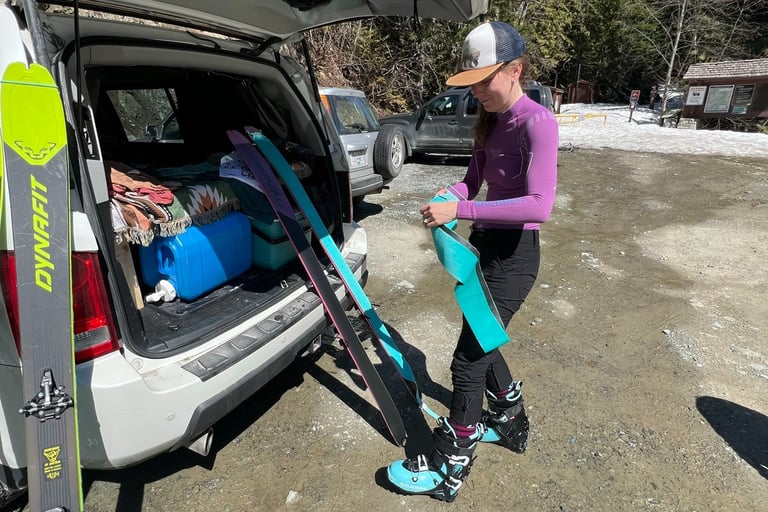

While being able to ski downhill comfortably is important, there are other crucial aspects to consider when ski touring. It's a more complex activity than resort skiing, offering a unique blend of physical exertion and mental exploration. You can enjoy the freedom of natural terrain, creating your own lines in untouched snow. Ski touring also allows you to gradually explore new areas and appreciate the stunning scenery, much like hiking. It's a truly immersive experience that combines the thrill of skiing with the serenity of the backcountry experience.
Explore
Inspiring mindful adventures in nature sustainably.
Join the wandering Community
© 2024. All rights reserved.
by @wanderingintwo
